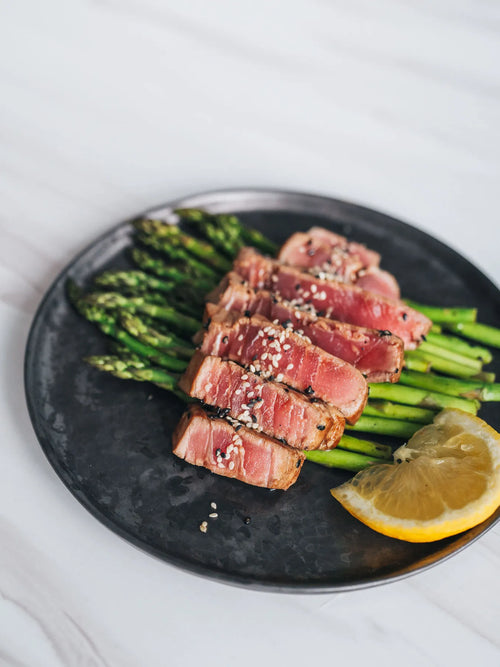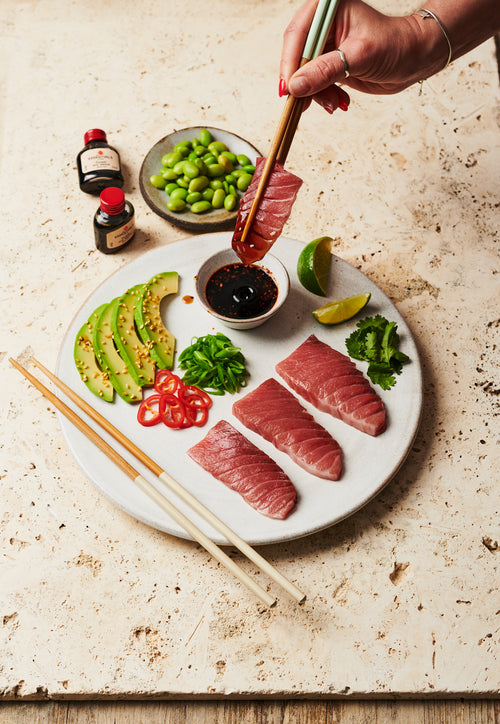
History of Bluefin Tuna
Bluefin tuna has a rich history dating back centuries and has played an important role in the economies and cultures of many countries. The Phoenicians, known for their extensive trade networks, are believed to have introduced bluefin tuna to the Mediterranean region around 3,000 years ago. During the Middle Ages, bluefin tuna continued to be an important food source for Mediterranean cultures and were particularly popular among the aristocracy.
However, overfishing and the decline of bluefin tuna populations in the 20th century led to the implementation of conservation measures, including a nearly complete fishing ban in the Mediterranean over the past 12 years. This ban has led to a resurgence in their numbers, and in 2021, the International Union for the Conservation of Nature reclassified Atlantic bluefin tuna as "Least Concern."
The Japanese also have a long history of consuming bluefin tuna, and it has become a staple in their cuisine. The Japanese first began consuming bluefin tuna in the 19th century when it was introduced to their waters by Westerners. However, it wasn't until the 20th century that bluefin tuna became highly prized in Japan.
Today, bluefin tuna is a highly valued commodity in Japan, where it is known as "hon-maguro" or "true tuna." The highest quality bluefin tuna, known as "o-toro," can fetch incredibly high prices at markets and auctions. In fact, a single bluefin tuna sold for a record-breaking $3.1 million at an auction in Tokyo in 2019. The Japanese consume bluefin tuna in a variety of ways, including as sashimi, sushi, and grilled. The fish is typically served raw or lightly seared to showcase its delicate flavour and texture.
At The Fish society, we take pride in sustainably catching bluefin tuna using artisanal methods such as line and pole. Our fleet of boats uses live bait to catch the fish, which minimises our impact on the marine ecosystem. We also participate in the joint management of bluefin tuna catch quotas in the Balearic Islands to ensure their continued sustainability. By utilising these sustainable methods, we are committed to safeguarding the health of the ocean and the bluefin tuna population for future generations.
A Taste of Bluefin
Bluefin tuna is widely regarded as one of the most prized and flavourful fish in the culinary world. Its taste can be described as rich, succulent, and buttery, with a melt-in-your-mouth texture that is both delicate and firm. The flavour profile of bluefin tuna is often compared to that of a wagyu steak, with a hint of oceanic sweetness and a savoury umami undertone. Bluefin tuna sashimi is a true delicacy that showcases the pure essence of this remarkable fish.
It is a culinary experience that allows you to appreciate the unparalleled flavours and textures of the fish in its unadulterated form, celebrating the simplicity and elegance of Japanese cuisine. When it comes to preparing and cooking bluefin tuna, it is important to preserve its natural flavours and textures.
Dive into a world of exquisite indulgence with our bluefin tuna, where every bite transports you to a culinary paradise you'll never want to leave.
Popular Methods for Preparing and Cooking Bluefin Tuna:
Seasoning: Keep the seasoning minimal to allow the natural flavours of the tuna to shine. A simple combination of salt, pepper, and a touch of olive oil is often sufficient.
Searing: Bluefin tuna is commonly enjoyed as a seared dish, known as "tataki." Heat a grill pan over high heat until it's smoking hot. Lightly oil the surface and sear the tuna steaks for about 1-2 minutes on each side, depending on the thickness, to achieve a golden brown crust while keeping the center raw or rare.
Slicing: After searing, remove the tuna from the heat and let it rest for a few minutes. Using a sharp knife, slice the tuna against the grain into thin, even slices. This technique highlights the beautiful marbled appearance of bluefin tuna.
Serving: Bluefin tuna is often served with accompaniments that complement its flavours. Common pairings include soy sauce, wasabi, pickled ginger, citrus-based sauces, or a drizzle of sesame oil. Serve the slices of tuna on a plate or over a bed of fresh greens, and garnish with sesame seeds or finely chopped herbs for added visual appeal.
Bluefin Tuna
Introducing our masterpiece: Bluefin tuna! After three years of planning, we are thrilled to present this culinary gem.
SHOP NOW













